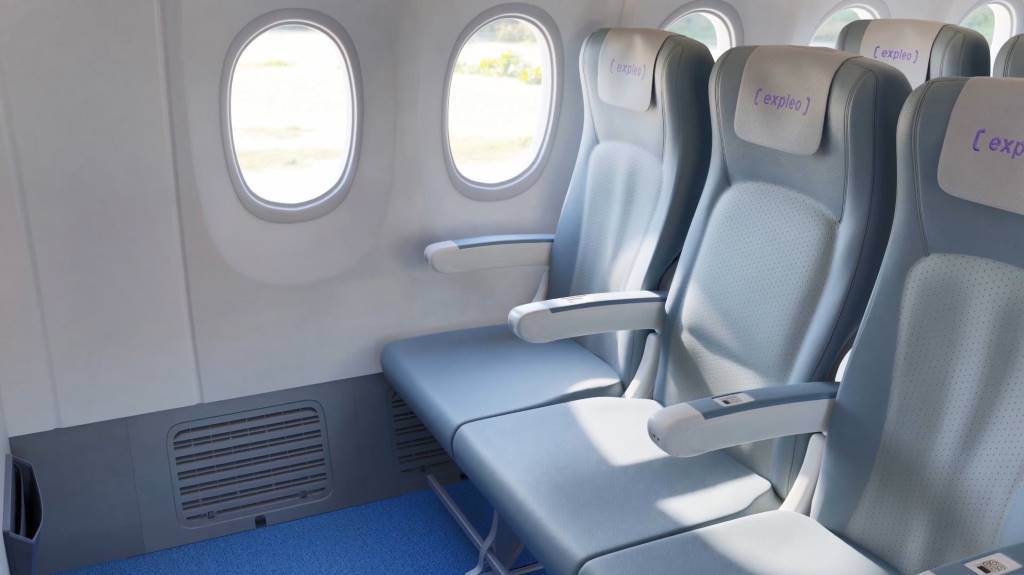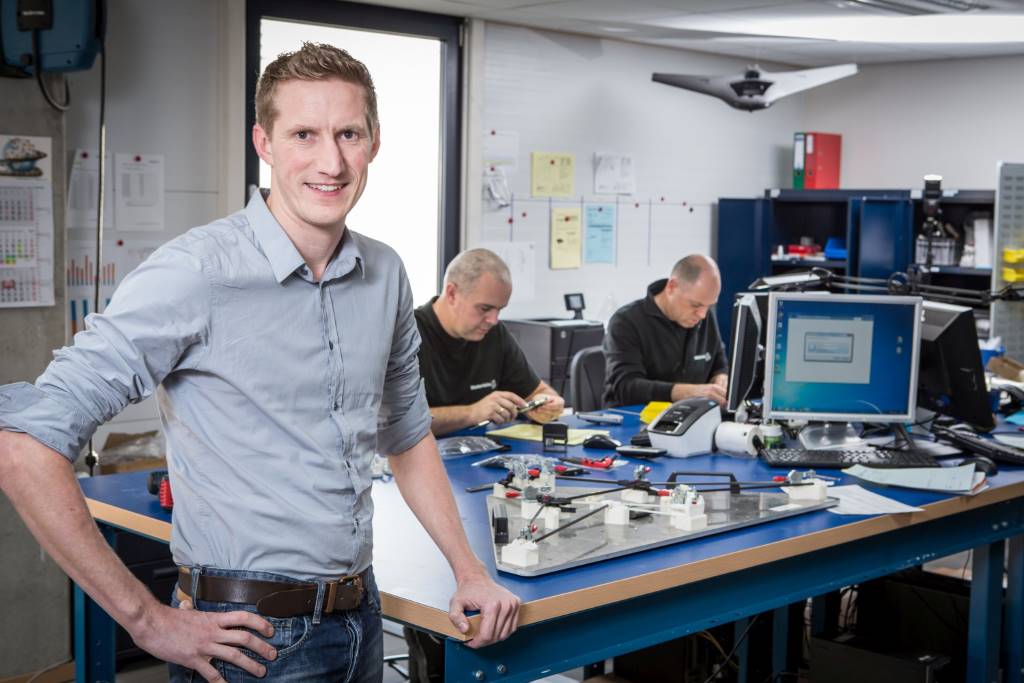Empowering your 3D printing applications

Erik De Zeeuw, Materialise’s market manager for certified manufacturing explains how the company’s three decades of open and flexible 3D printing solutions enables its customers to build innovative 3D printing applications.
Headquartered in Belgium, Materialise says it combines the largest group of software developers in the industry with one of the largest 3D printing facilities in the world. This year, the company expanded its metal 3D printing footprint by opening a new Metal Competence Centre for 3D Printing in Bremen, Germany - adding enough capacity for 30 metal AM machines. And as part of its mission to further sustainability in 3D printing, it has launched a new 3D printing service in 100% reused powder called Bluesint PA 12.
Q) To begin, what are the types of demands placed on your company by today’s aerospace customers?
Reliability is the key word underlying the expectations of the aerospace industry. That's reliability in not only the quality, but also in demand management and delivery on time. In our experience, this kind of reliability is founded on close collaboration. We have been an approved Airbus supplier for six years now. Because we work so closely together, we are able to forecast demand for Airbus to some extent and plan ahead for busy peaks in their production schedule, to ensure fast turnarounds even at short notice.
For some other customers, reliability lies in knowing that their designs are reviewed by our experts in design for additive manufacturing. Aerospace designers aren't always specialised in design for additive manufacturing (AM) and we find that they appreciate a collaboration that combines their expertise in aerospace design with our knowledge of lightweighting, generative design, and topology optimisation.
Q) What are customers looking for in terms of AM-related performance solutions?
The main thing customers or engineers are looking for in terms of AM-related performance solutions is quality and an attractive seamless finished interior. Most importantly there needs to be a quick turnaround from start to finish and integration between old and new products. A quick turnaround is imperative as the longer an aircraft stays on the runway, the less income it is providing.
In terms of design, the aerospace industry is constantly looking for lightweight solutions that would contribute to total cost management. There is a lot of interest in bionic design, generative design, and AM is ideal for producing parts designed with these principles as they are typically too complex to manufacture with traditional methods. The overhead spacer panels Materialise produces for Airbus, for example, are 15% lighter than conventionally manufactured ones. We also see interest in redesigning parts for AM to improve their functionality, making parts stronger or more performant. Expleo, an MRO customer of Materialise, worked with us to redesign an often-broken dado panel in a way that’s actually stronger than the original part.
Q) How mature is the current additive manufacturing supply chain?
Materialise started working with Airbus around six years ago, just a year after Airbus started looking for 3D printing suppliers. However, although AM (and Materialise) has just celebrated its 30-year anniversary, it is still quite a new and innovative manufacturing process for many. We pride ourselves on being at the front of 3D printing innovation and having the history and ability to provide knowledge and experience.
For prototyping and production tools, it can certainly be said that the AM supply chain is mature. When it comes to manufacturing end-parts, there is a paradox for aerospace and other industries. As a digital manufacturing technology, AM is a great indicator of maturity in manufacturing supply chains. Without AM, digital twins and digital inventories don’t become actionable. AM lets you warehouse parts without having to keep a physical stock. However, the supply chain of AM itself is still maturing. Some key players like Materialise and EOS have been around for decades. With the industry growing, the feedstock has caught the attention of the big mature manufacturing players. We’re looking at process automation, leveraging integration with manufacturing execution systems, which will take us a step forward to connecting with aerospace companies’ supply chains.

Q) Is AM restricted by the size of parts and the speed in which it can deposit materials?
We do not believe that AM is restricted by size or speed. AM hardware is constantly evolving for higher productivity and build sizes. Typical lead-times for 3D-printed aerospace parts today range between 5-10 working days. Compare that to traditional manufacturing, where the tool production alone takes longer. Besides the actual production time, AM allows designers to innovate differently and get the end result faster by fast-iterative design, rapid prototyping and also the ability to completely rethink components and assemblies. This gives more opportunities ultimately for overall innovation.
Q) How much of a post-production issue is it to remove support webbing after the printing process?
Selective Laser Sintering or SLS technology (which is used to print PA-FR) is a powder-bed technology and doesn’t need any support. The SLS has an advantage over FDM (the technology used to print ULTEM 9085). SLS allows for more complex parts and less post-production needed, which makes it more versatile and cost effective. On the other hand, SLS parts need post-printing removal of unsintered residual powder, and this can sometimes be a challenge with certain geometries like small channels. Typically this issue can be anticipated and corrected in advance while reviewing the 3D design file.
Q) And how much is AM being used to print tools, say for sending parts over the wire to support an aircraft on the ground (AOG)?
AM is widely used for tools in production areas in aerospace. After prototyping, production tools are the second most insourced use of AM. It’s so widely spread because it is an application that has fewer requirements than end-part manufacturing, and one that benefits from quick implementation with trial-and-error improvements. Tools are likely shared online for companies with similar production areas but most often they’re used locally.
Fokker Elmo, one of Materialise’s customers, manufactures a cable twist wheel which takes advantage of AM’s design freedom to create an assembly-free design. For complex applications where off-the-shelf tooling doesn’t work, specialised tooling manufacturers design custom solutions.
Q) Are AM derivatives, such as wire and arc additive manufacture and Electron Beam Melting finding favour in the aerospace industry?
Electron Beam Melting (EBM) is like Selective Laser Melting (SLM) part of the powder-bed fusion family, where the bulk of metal AM applications are being made and also used in the aerospace industry. EBM and SLM are mostly used for smaller complex components, directly competing for some applications but mostly serving their own niche, depending on size and complexity.
Wire and Arc Additive Manufacture (WAAM) is part of the Direct Energy Deposition (DED) family of AM technologies, recognised by low resolution, high volume deposition of metal. DED is mostly used as a near-net shaped technology. With limited complexity in combination with post-machining, it can replace forged or milled components, saving money due to the buy-to-fly ratio.
This type of design is mostly conventional, and does not have the complexity of powder-bed fusion (PBF) products like SLM. WAAM is a niche in DED, suitable for even larger components or repair printing onto existing components These technologies are finding their way into aerospace EBM more than WAAM, but in their respective niches.
Q) Is AM truly the way forward or are cycle times and ‘flight ready’ part qualification an issue?
While 3D printing still faces some challenges to further adoption, such as lowering the qualification barrier, these are greatly outweighed by the pros and innovation 3D printing brings to the aerospace industry. These benefits include lightweight and bionic design, as well as the supply chain benefits of on-demand production without stock dependency. This technology can make operations more sustainable today, while building up the knowledge, processes and systems needed for tomorrow. The future of aviation is unimaginable without AM in it.
Q) What particular aspect has helped your company get through the pandemic?
The pandemic caused global supply chain issues that would lead to delays in fulfilling orders and expensive workarounds. We used our knowledge to help struggling supply chains by helping our clients expand their AM strategy.
The pandemic or an existential threat like the climate crisis creates a sense of urgency for companies that forces them to rethink the way they operate. The pressures of these types of existential threats demand more than just incremental steps forward. Incremental processes of innovation leave little room for revolutionary technologies like AM to make an impact. But by allowing ourselves to completely rethink how we approach solutions, we open the door to radical new designs and innovative processes, something AM is naturally designed to do.

Take Airbus for example. They recently revealed plans to accelerate the development of hydrogen-powered commercial jets and skip over the development of hybrid engines entirely. This bold jump means that by 2035, the world could see the first zero-emission, climate-neutral aircraft. Technologies like AM can play a big part in realising these types of innovative concepts.
Q) Finally, where next for Materialise?
3D printing continues to transform the shopfloor as companies across multiple industries increasingly turn to 3D printing for large-scale production. Materialise is committed to help these companies scale their 3D printing processes across complex supply chains and integrate these operations with existing production infrastructures.
In the past three decades, 3D printing has established itself as a powerful and sustainable manufacturing solution. As a result, many view 3D printing as a positive force to help companies operate more sustainably. But considering AM a green technology simply because of the unique benefits that are inherent to the technology is too easy. Materialise continues to invest in innovative technologies to establish AM as a truly sustainable manufacturing technology. New innovations will help to reduce the negative impact of the technology, including waste and energy consumption. And by better understanding the process and increasing our ability to control it, we plan to make AM more sustainable.












